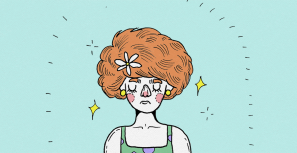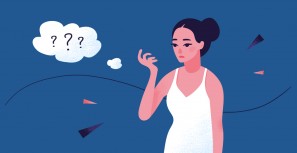It's not uncommon for anxiety to lead to symptoms that are surprising or unusual. Some of them can be so strange that people convince themselves that they may have a serious disorder.
An example of an unusual symptom scientifically is a red face or blushing. When your face turns red from anxiety, it can sometimes be embarrassing, and other times be downright confusing. While red face may be a medical condition of some kind, some people do find that anxiety is what is actually causing their flushing.
Introduction to Red Face/Flushing
There are several medical conditions that cause a person’s face to turn red. It’s never a bad idea to explain your symptoms to a doctor to rule out any challenges that may be affecting you. But if your doctor cannot seem to find anything wrong, the cause may be anxiety.
One thing to note, however, is that your face turning red should never be the only symptom. You should also be experiencing other anxiety symptoms if anxiety is the cause, such as rapid heartbeat, sweating, fast breathing, jitters, and more.
But red face may be a symptom, and if it is, it also normal.
While the specific purpose for the body is not entirely clear, most scientists believe that a red face (aka flushing, blushing, or "turning pink") was once a form of nonverbal communication.
Flushing occurs with several emotions, combined with other nonverbal behaviors the other person can read your emotions and tell when you're nervous, angry, aroused, etc.
Scientists are unclear as to why people's faces turn red. They do, however, know what's happening biologically. It is known to be caused by dilation of capillaries in the face. That blood then makes your face more visibly red, especially if you have light skin. It may also make your face feel hotter.
How Anxiety Triggers Flushing
Anxiety triggers this behavior by releasing epinephrine/adrenaline, which is the primary hormone involved in the fight-or-flight response, which is responsible for anxiety. When you feel anxiety, your body responds like it's seeing a predator, and that creates an autonomic arousal that creates a host of changes in your body, one of them being a redder face.
看来,即使这个反应可以发生person does not feel much anxiety, but it's not clear why. Chances are their body is still experiencing stress at a baseline level.
How Red Face Triggers Anxiety
Of course, anxiety doesn't just trigger flushing. Unfortunately, flushing can also trigger anxiety. Those with anxiety often find that having a redder face causes them a great deal of embarrassment. They want to hide their face in public, which ultimately makes them much more self-conscious and potentially creates more anxiety in the future.
Flushing is, indeed,associated with organic/systemic diseases; this can can cause further anxiety as these patients may confuse their condition with those diseases.
How to Stop Anxiety Flushing
Once triggered, it's simply a waiting game for the red face to go away. Following are some tips and strategies to keep in mind when you feel like you're suffering from a red face too often and it's causing you discomfort or embarrassment:
- Always Be HonestEmbarrassment is its own enemy. When you're embarrassed about something and try to hide it, you tend to continue to stay embarrassed for longer and sometimes experience anxiety as a result. So if someone points out that your face seems to have turned red, be willing to tell them that you have anxiety and it sometimes happens. If you try to hide it or pretend something's wrong, it may get worse.
- Start ExercisingExercising may not seem like it has anything to do with anxiety, but studies have consistently shown that exercising can provide significant anxiety relief. Exercising also improves blood flow and may reduce adrenaline. So make sure that you're exercising regularly.
- Learn Breathing TechniquesYou should also do your best to learn as much as you can about breathing with anxiety. Anxiety is often hard enough, but many people start hyperventilating, which in turn causes a natural increase in their anxiety symptoms. You need to slow down your breathing dramatically to keep the correct carbon dioxide and oxygen balance, which is important for keeping your anxiety levels down.
The purpose of these strategies is not to cure your flushing since that takes time. The purpose is to make sure that your anxiety doesn't get worse at the moment. You'll still need to commit to a strategy that will fight the anxiety altogether.








